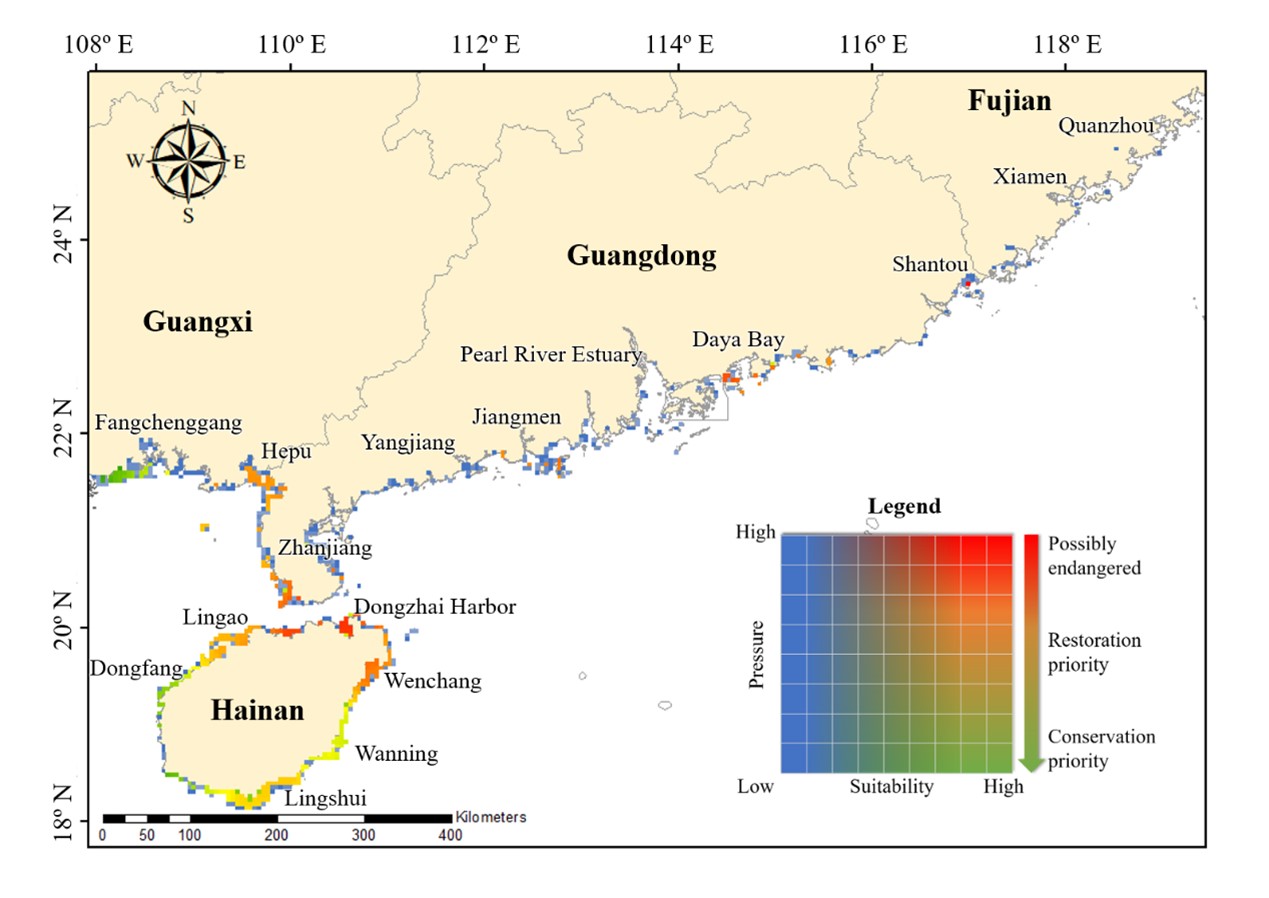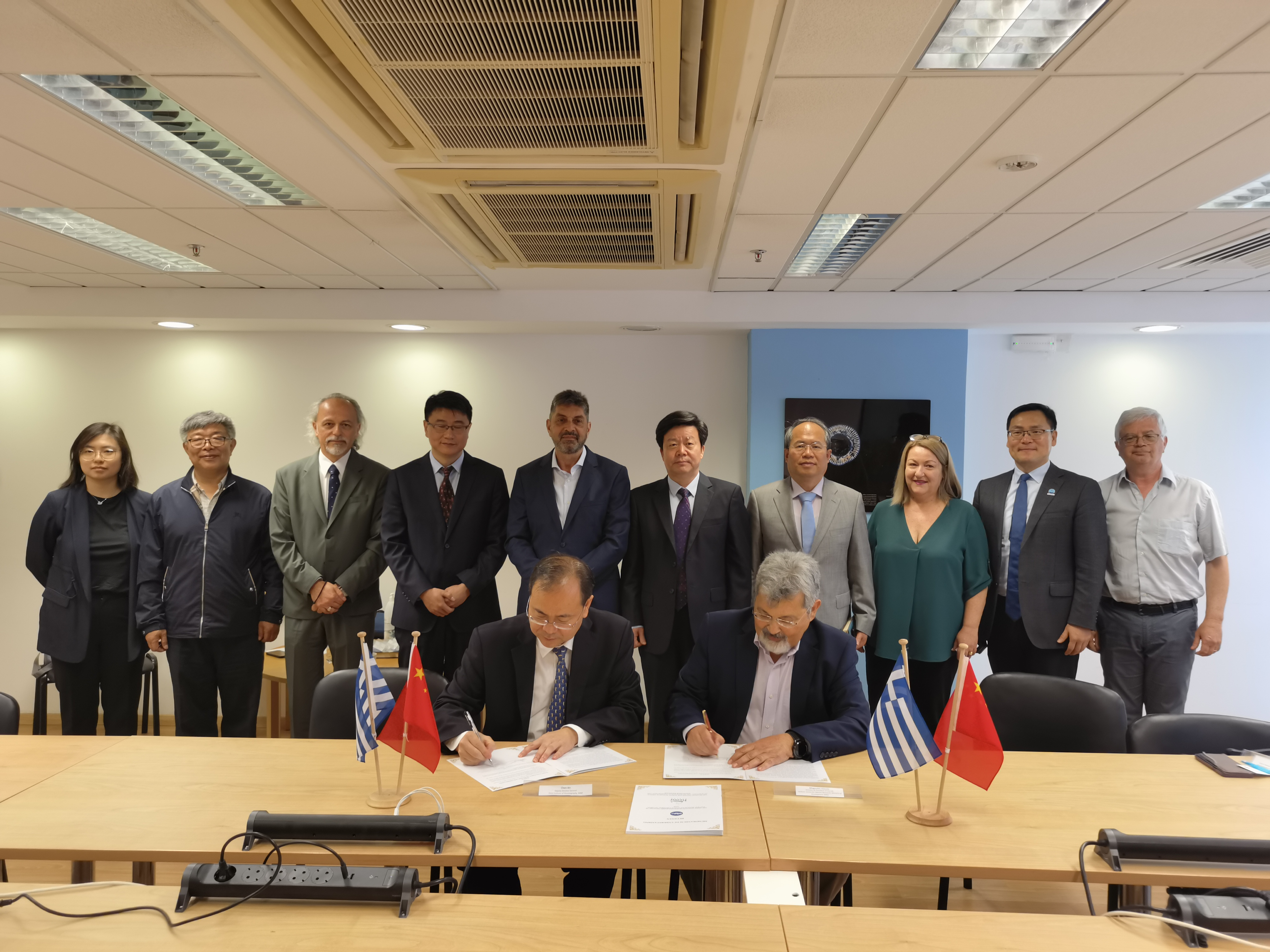
Progress in the seagrass ecosystem conservation and restoration priorities
Release Time:2021/07/19
Recently, the marine conservation ecology research team of the Third Institute of Oceanography, cooperating with Hainan Academy of Ocean and Fisheries Sciences and other institutes, has made new progress in the research on the seagrass conservation and restoration priorities. Under the support of the National Key Research and Development Program of China, the National Natural Science Foundation of China, and the China-ASEAN Maritime Cooperation Project, the article “Seagrass meadows provide multiple benefits to adjacent coral reefs through various microhabitat functions” was published by the SCI journal "Ecological Indicators " (IF 4.958), with Dr. Hu Wenjia being the first author, Dr. Du Jianguo and Dr. Chen Shiquan the co-corresponding authors.
Seagrass meadows provide important ecosystem services, though they are among the least conserved marine ecosystems. The Southern bioregion of China has the nation’s largest seagrass distribution. However, lack of information on the distribution of seagrasses and the threats they face pose a significant obstacle to their conservation and restoration. Accordingly, a framework for prioritizing conservation and restoration objectives was proposed in the present study. First, the team modeled the suitable habitats with MaxEnt, random forest (RF), and ensemble models to obtain a reliable basis map of seagrass distribution. A potentially suitable area of approximately 3,536–4,852 km2 was mapped in the coastal sea of South China, with the greatest area occurring between 18 °N and 22 °N. The anthropogenic pressures on the seagrass habitat were then estimated using an integrated exposure index consisting of four indicators, namely, population density, fishery economy, aquaculture, and shipping. The results indicate that 48% of the coastal seas are under intensive anthropogenic pressures, with a higher exposure in the north than the south. The current conservation status suggests that there is a large seagrass conservation gap. By coupling the two dimensions of habitat suitability and integrated exposure, priority sites for seagrass management in South China were identified for the first time. It is found that there may be unrecorded distribution sites and large protection gaps in seagrass beds along the coast of South China, and the distribution of seagrass beds in China may be overestimated by international studies. This study can provide a scientific basis for the protection and restoration of seagrass beds, and provide a marine spatial planning tool for the ecological management.
In recent years, marine conservation ecology research team has carried several studies in the fields of seagrass ecological conservation, such as the food web, ecological connectivity, and conservation spatial planning, a multi-level research system from micro to macro perspectives has been formed. The research results have been published in the international journals such as "Ecosystem Health and Sustainability", "Acta Oceanographica Sinica", "Marine Biology Research", " Acta Ecologica Sinica " and so on. These studies improve the understanding of the structure and function of seagrass bed ecosystem, confirming that seagrass and its epiphytes are the main organic carbon sources of seagrass bed fish and benthos, and play a key role in the energy flow of seagrass bed ecosystem food web. In addition, these studies also provide a deeper understanding of the multiple scales at which connectivity exists between seagrass meadows and coral reefs, and the processes that underpin their exchange of fauna and their biodiversity.

Spatial pattern of conservation and restoration priorities in the Souther bioregion of China
Link to the paper: https://doi.org/10.1016/j.ecolind.2021.107960
-
China Hosts Side Event on the Theme of Blue Citizen at Our Ocean Conference 202404/19/2024
-
APEC Training Workshop on Capacity Building for Blue Citizen successfully conducted in Xiame...09/15/2023
-
APEC Marine Sustainable Development Center participated in 21st APEC Oceans and Fisheries Wo...08/01/2023
-
International Atomic Energy Agency Training Webinar in Tracer Oceanography was held echoing ...06/09/2023
-
Research Progress on the Degradation of Polystyrene by Plastic-eating Marine Benthic Polychaete and their Gut Microbiome04/01/2024
-
Deep-sea Microbial Genetic Resources: New Frontiers for Bioprospecting02/02/2024
-
Progress from marine-derived Fungus01/31/2024
-
Deep-sea bacteria involved plastic biodegradation and microplastic generation01/18/2024
-
New progress in Late Pleistocene sea level change and tectonism control on the formation of the Old Red Sand along the southeastern coast of China01/10/2024
-
Dr. Lin Longshan’s team has made new progress in Antarctic fish biodiversity research12/08/2023

